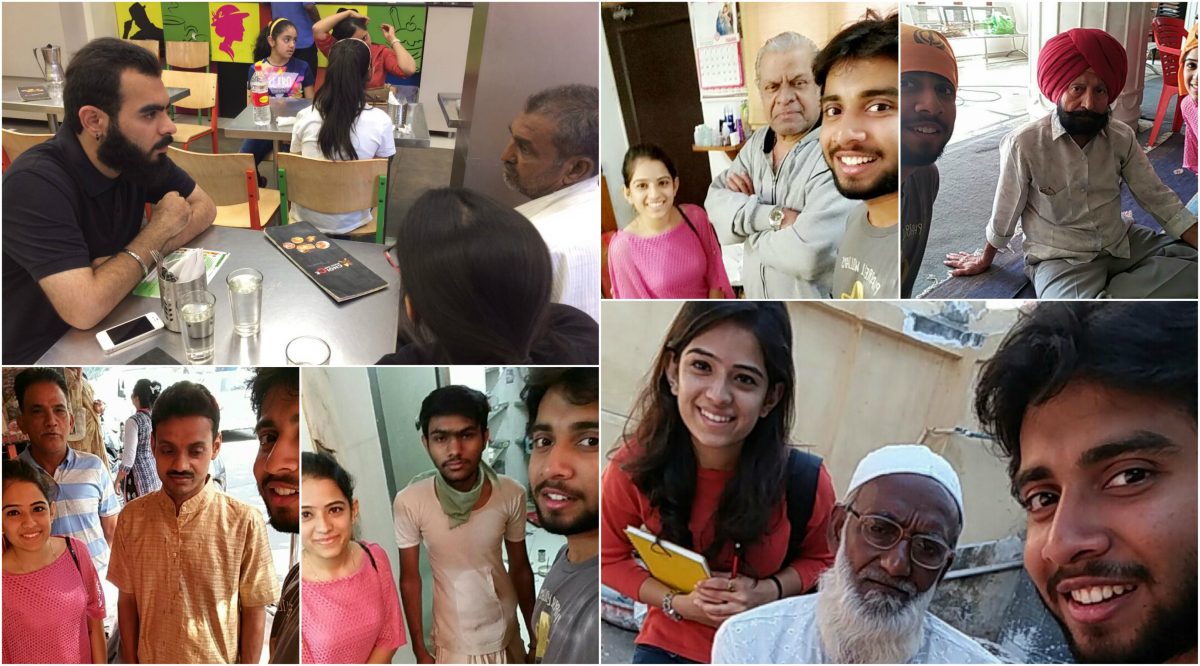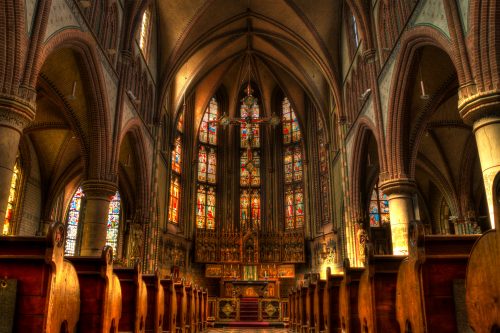TBI Blogs: When a Young Man Experienced Christianity, Sikhism, Islam, and Hinduism – All in Three Days!
Exploring religion can be a deeply moving experience, especially when one decides to overcome his/her own prejudices and explore other religions with an open mind. Jagrik (Jagruk+Nagrik) Priyanshu from Ahmedabad, Gujarat narrates his experience exploring different religions as part of a task for Samvidhan LIVE: The Jagrik Project.

Exploring religion can be a deeply moving experience, especially when one decides to overcome his/her own prejudices and explore other religions with an open mind. Jagrik (Jagruk+Nagrik) Priyanshu from Ahmedabad, Gujarat narrates his experience exploring different religions as part of a task for Samvidhan LIVE: The Jagrik Project.
The ostensibly easy task belied the challenges it contained. I had to visit places of worship from five different religions as part of one of my tasks under Samvidhan LIVE: The Jagrik Project. I had no idea how it would pan out, and was scared and confused, but also excited to explore religion through this opportunity.
It first started with the CNI church located on the first floor of a dilapidated building in a regal neighbourhood. I was surprised to find the door locked from inside. I knocked. “How may I help you?” A muffled voice from the other side of the door asked me. I explained my visit’s purpose, even as the sister unlatched the door. I removed my shoes, out of habit, only for her to break into laughter. “You don’t have to,” she said. She led me in and asked me to have a seat.
The curtains were carefully closed, and the room was cold and quiet. “The pastor is back after an arduous night journey,” she said, employing a cinematic pause before adding, “I’ll ask him, though.” She disappeared into one of the rooms. I glanced across the prayer hall at the altar, which was on a raised platform. The long, wooden seats smelled of varnish. It was a setting perfectly suited for contemplation.
The sister came back with an apologetic look on her face, “I am extremely sorry, but the pastor cannot give you his time at this moment. But why don’t you write your name here, and your contact number below that, and the name of the organization and the project on the flip side. I’ll call you, some other day.”
I obliged.

The next stop was the Gurudwara, which roughly translates as ‘The residence of the Guru’. Aware of the practices and customs, I removed my shoes, washed my feet, dutifully covered my head with an orange scarf, walked down the hall, my hands conjoined, and knelt before the holy book, The Guru Granth Sahib. The holy book was kept on a raised platform. I sat there for a while on the woollen mattress, reciting the Gurumukhi.
Unlike my visit to the church, I received no special attention, and there were no idols or statues inside the prayer hall. I approached the sevaks, who were busy talking in hushed voices. “Well, why don’t you talk to the revered Gyaanji. He is in his room,” one of them said. I had expected the conversation to be cordial. I wanted to ask some very basic questions about the Sikh religion and hoped for some cordial answers to those questions. Instead, I was greeted with, “You have to take an appointment, betaji. Come on Sunday.” I tried telling him how my questions were very generic in nature, and that there were only half-a-dozen of them. But he would have none of it. By that time, I was pretty low, and couldn’t visit the mosque, as was the initial plan.
I definitely needed some rest first.
![Gurudwara Govinddham, Ahmedabad. (Source: By Maulik Kansara (Own work) [CC BY-SA 3.0], via Wikimedia Commons)](https://en-media.thebetterindia.com/uploads/2017/01/Gurudwara_Govinddham-500x342.jpg)
So, there I sat and murmured all the sayings I knew – a short list, to be honest. I then made my way to the prayer hall, exploiting the liberty I was granted by taking pictures of the same, when a watchful person caught my gaze. Abdul Wasim worked at a factory making plastic cups. He asked me my purpose for the visit, which I mentioned enthusiastically. He replied, “The cleric is out for work. He’ll be here at the time of the namaz though.” He then walked me through the prayer hall, which did not have any idols, statues, or book. Merely a wall with intricate carvings, with a very noticeable hint of Indo-Islamic architecture.
There was a digital clock, displaying the time of all the important and major cities of the Middle East, and a board displaying the time of prayers. “The next namaz will be the Maghrib ki Namaz,” Wasim said. I was heading back, the sun dipping low in the horizon, when I heard a blaring voice on the loudspeaker.
The voice of the cleric, I inferred, summoning Muslims to prayers.
![Sarkhej Roza, near Ahmedabad. (Source: By Museeb fakih (Own work) [Public domain], via Wikimedia Commons)](https://en-media.thebetterindia.com/uploads/2017/01/Sarkhej-500x375.jpg)
I inquired for the Panditji, only for his assistant to inform me that he was busy doing the shringar of the Lord, after which he was supposed to do the last aarti of the day, and then edify the students before they were off to their beds. “Some other day, Priyanshu Bhai,” the assistant said. Meanwhile, the students stood up, folded their mattresses, and covered the scriptures with a silk cloth, all with military-like precision.
The Panditji soon opened the door, the dhol started beating, people volunteered to toll the bells, and soon people crowded the hall, congregating for the evening prayer.
![For representation purpose only. (Source: By Hari Prasad Nadig (Flickr: Exalted) [CC BY-SA 2.0], via Wikimedia Commons)](https://en-media.thebetterindia.com/uploads/2017/01/Aarti_Arati_Lamp_for_Puja_Prayers_Hinduism-500x370.jpg)
Read other such experiences, and connect with the Jagriks of Samvidhan LIVE through their Facebook page and website.
Like this story? Or have something to share? Write to us: [email protected], or connect with us on Facebook and Twitter.
NEW: Click here to get positive news on WhatsApp!
This story made me
-
97
-
121
-
89
-
167
Tell Us More
We bring stories straight from the heart of India, to inspire millions and create a wave of impact. Our positive movement is growing bigger everyday, and we would love for you to join it.
Please contribute whatever you can, every little penny helps our team in bringing you more stories that support dreams and spread hope.



















